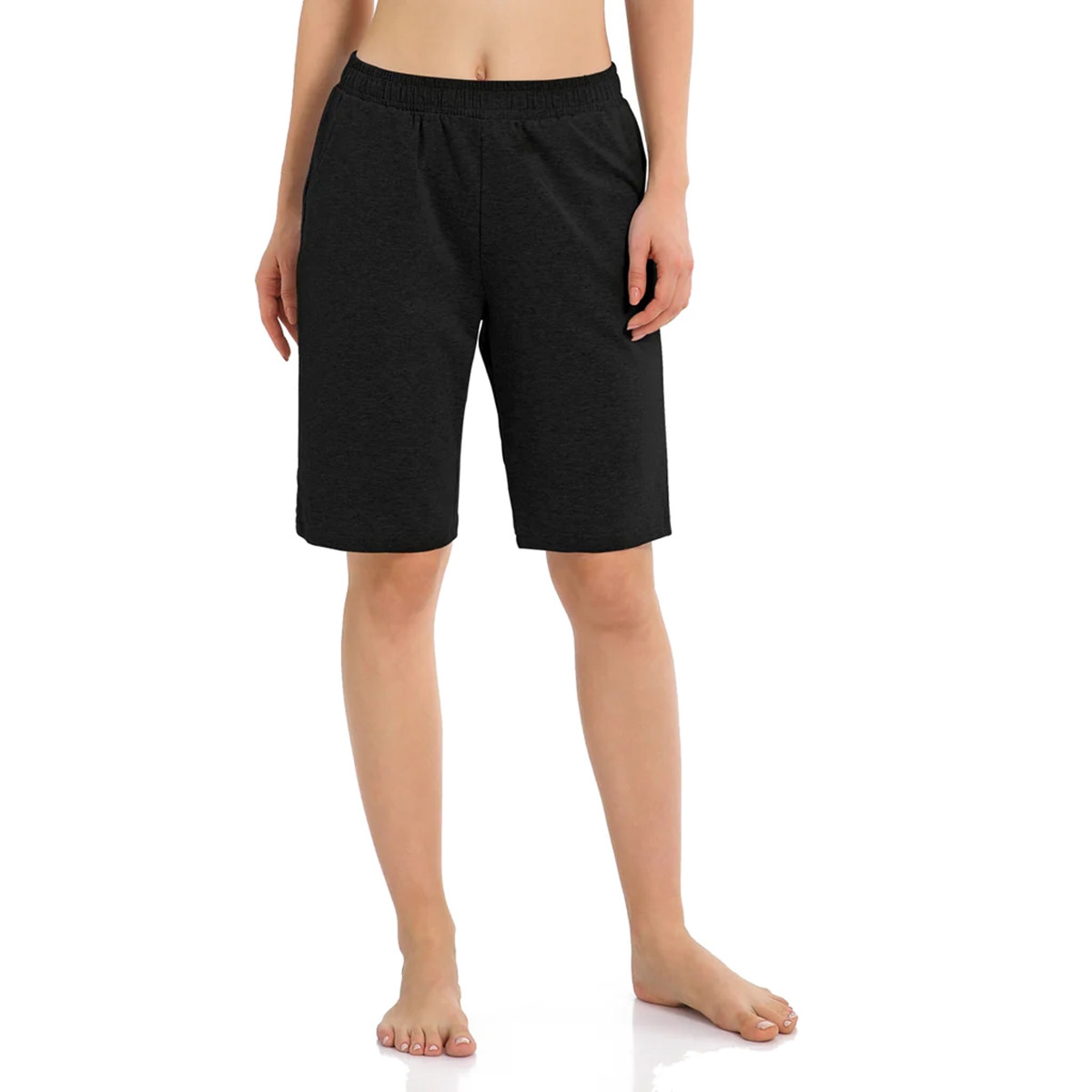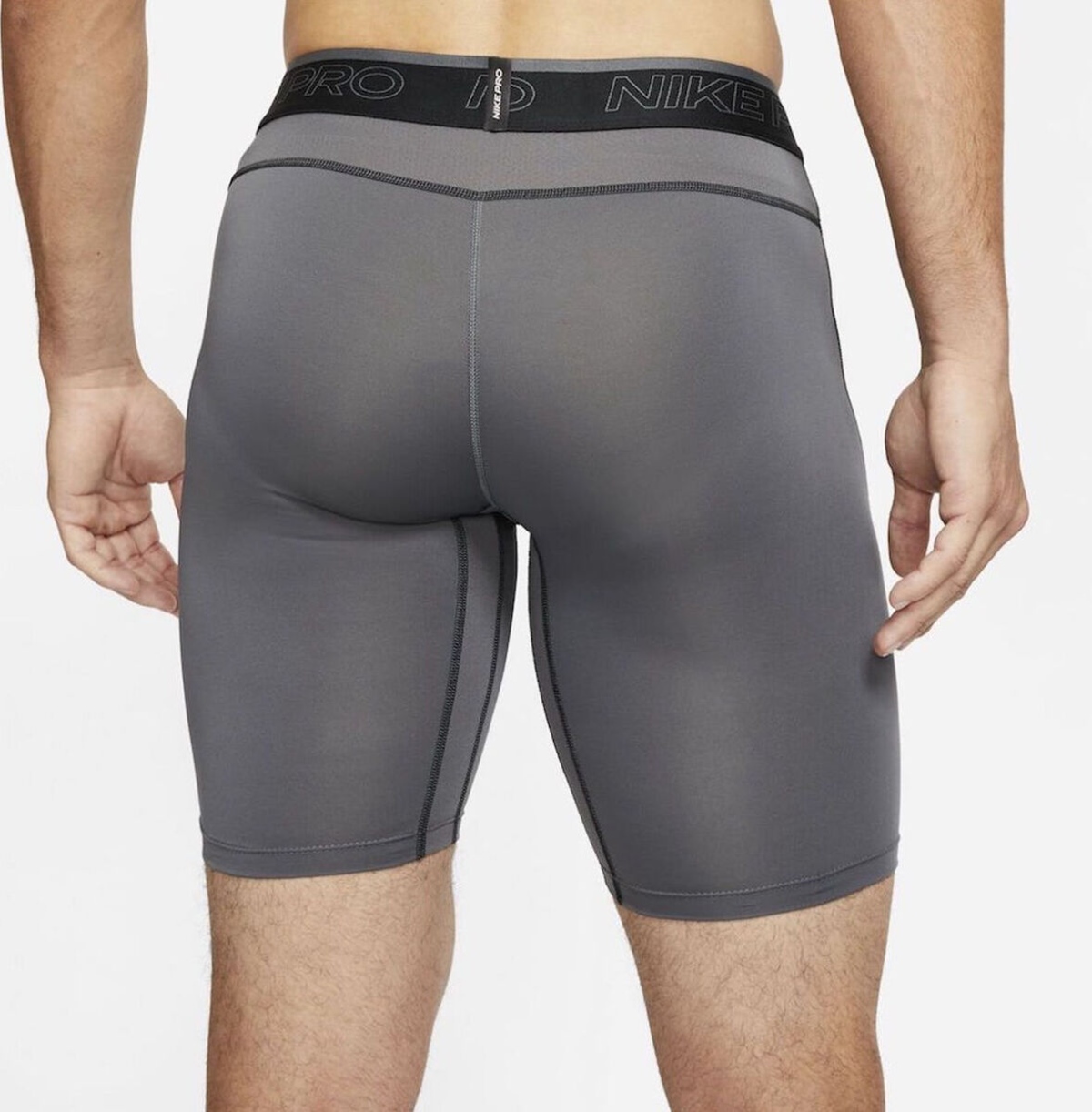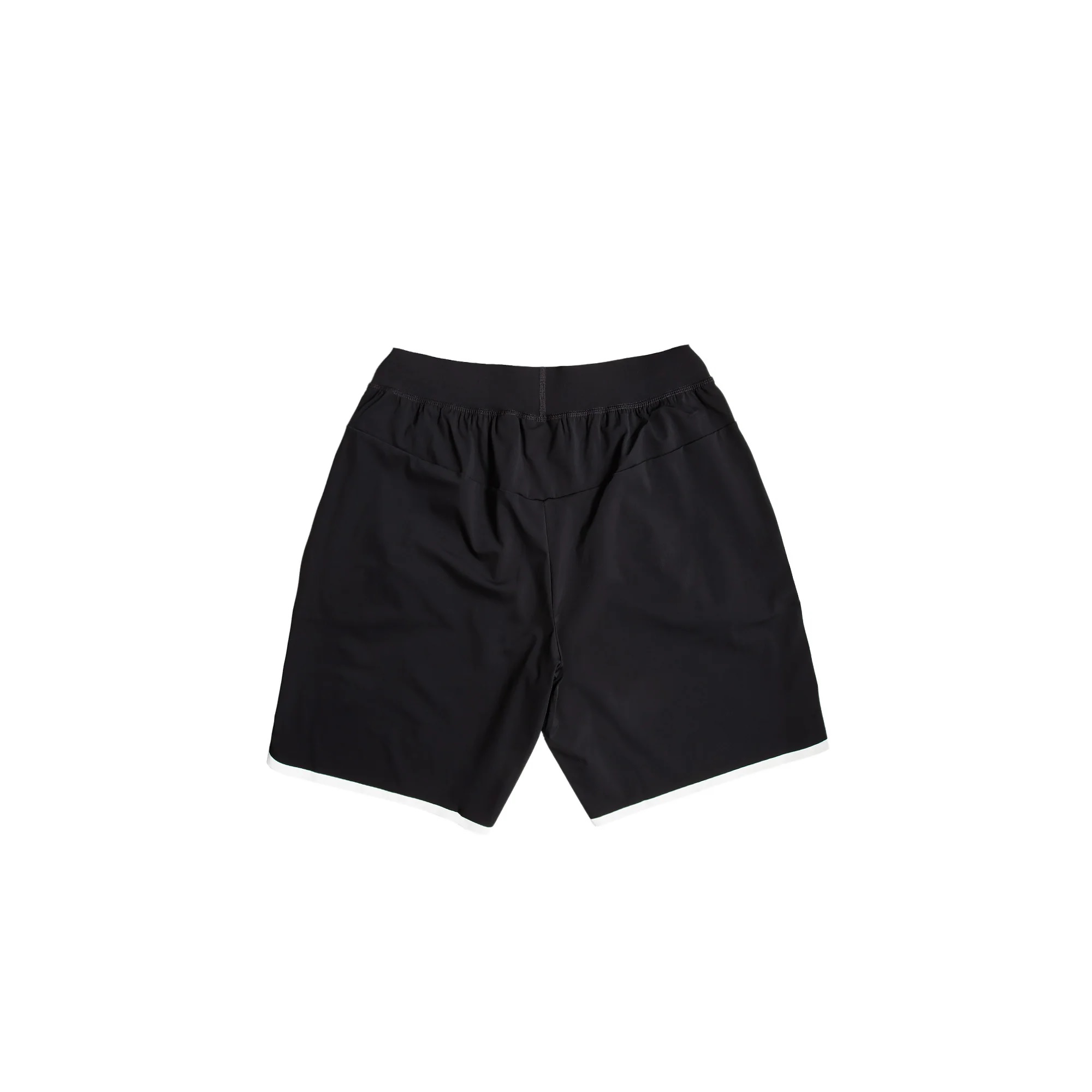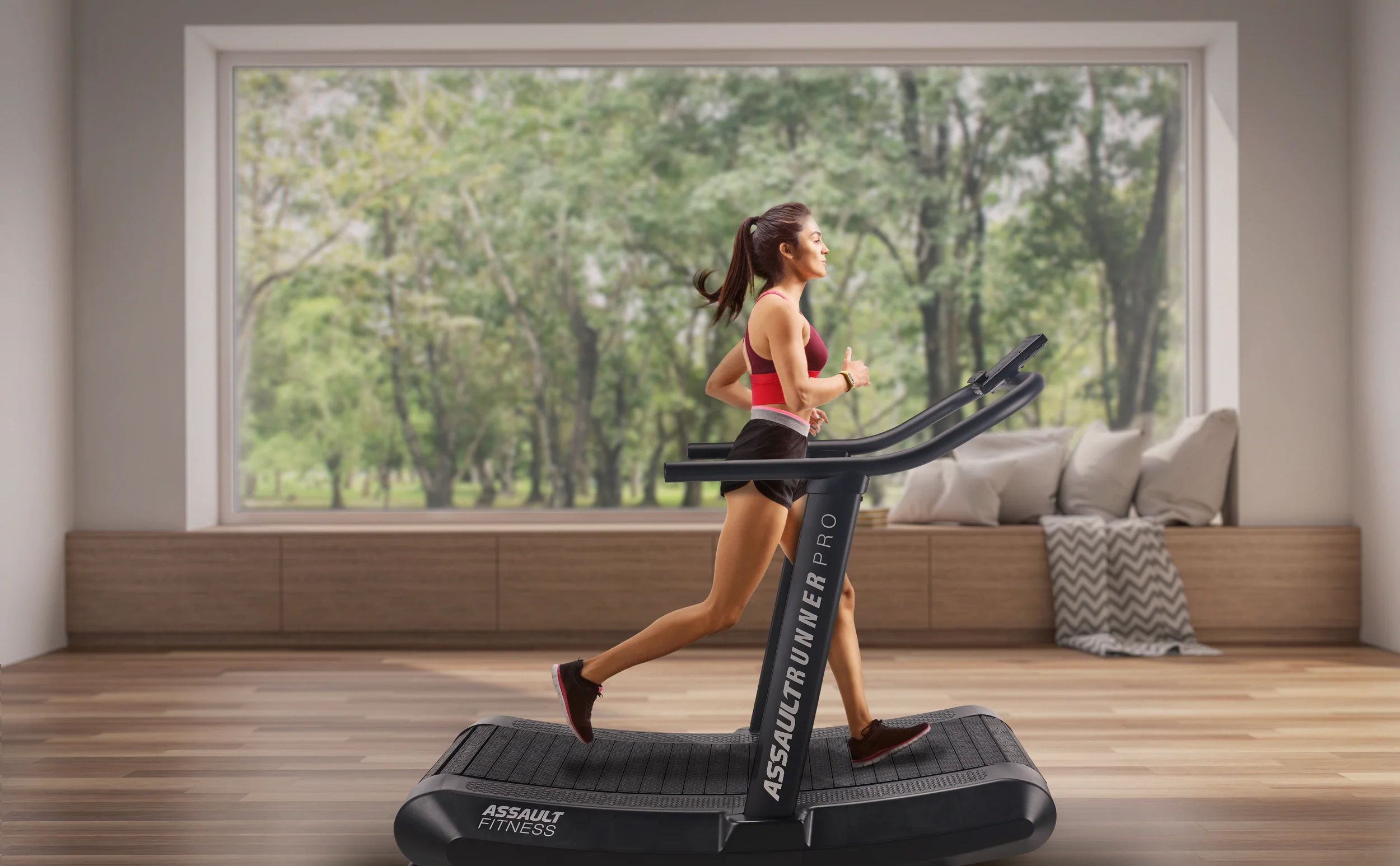Home>Misc>Featured>How Does Cooling Down Help Those Who Exercise
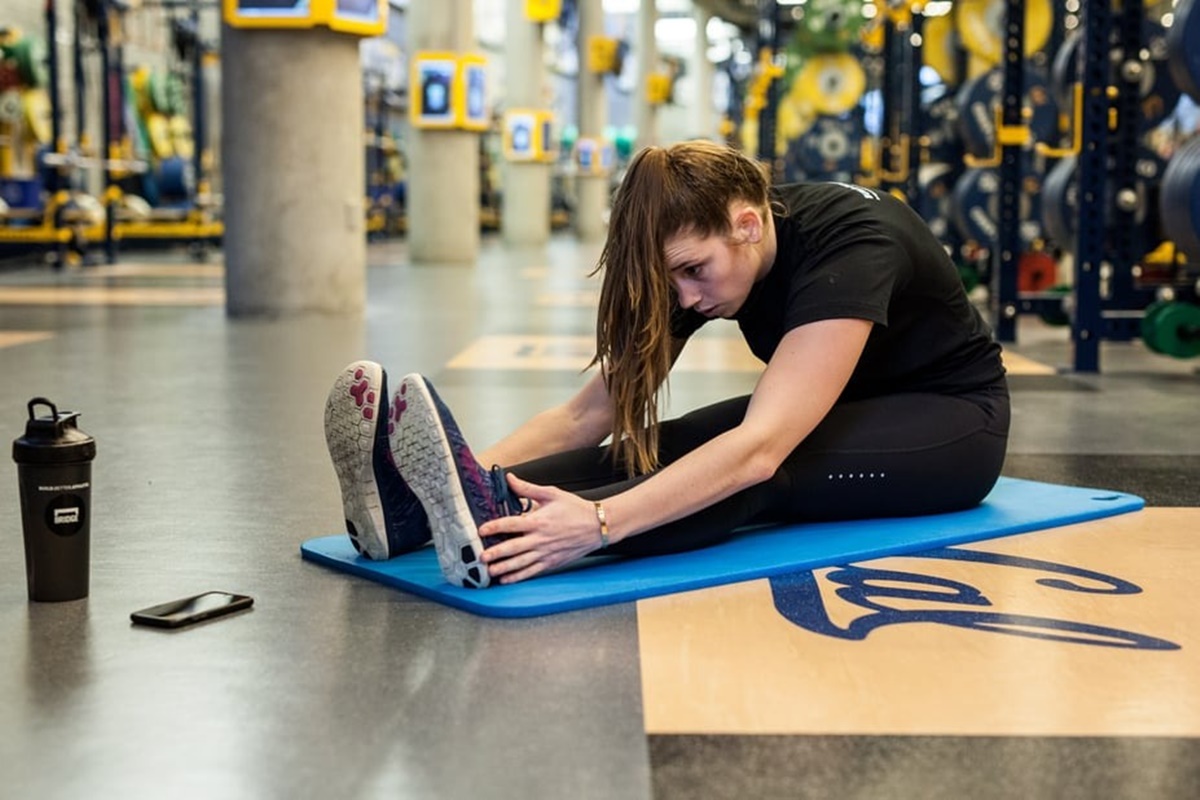

Featured
How Does Cooling Down Help Those Who Exercise
Published: October 1, 2023
Learn how cooling down after exercise can benefit your body and help prevent injury. Get featured tips on the importance of proper post-workout recovery.
Introduction
When it comes to exercise, we often focus on the warm-up and the main workout, but it is equally important to pay attention to the cooling down phase. Cooling down after exercise refers to a period of low-intensity activity performed at the end of a workout session. While it may be tempting to skip this step and head straight for the showers, taking the time to cool down properly can actually have a significant impact on your overall fitness and well-being.
During exercise, your heart rate increases, blood vessels dilate, and muscles are put under stress. Cooling down allows the body to gradually transition from a state of intense physical activity to a resting state. This period of transition is crucial for allowing the body to recover and return to its normal state.
Cooling down can provide a myriad of benefits, including reducing the risk of injury, preventing muscle soreness, and aiding in muscle recovery. It also helps to promote relaxation and mental well-being, allowing you to wind down after a tough workout.
In this article, we will explore the importance of cooling down after exercise, how it affects the body, and various techniques and exercises that can be incorporated into your post-workout routine. So let’s dive in and discover how cooling down can enhance your exercise experience and improve your overall fitness.
Importance of Cooling Down After Exercise
Cooling down after exercise is often overlooked, but it plays a crucial role in helping your body recover and maintain optimal performance. The main purpose of a cool down is to gradually bring your heart rate, breathing, and body temperature back to baseline levels. Here are some key reasons why cooling down is important:
- Reduced risk of injury: Cooling down allows your body to gradually transition from high-impact exercise to a resting state. This helps prevent blood pooling in the extremities and reduces the risk of dizziness or fainting. It also helps prevent sudden drops in blood pressure, which can lead to injury.
- Prevention of muscle soreness: Engaging in intense exercise causes a buildup of lactic acid in the muscles. Cooling down aids in the removal of lactic acid and other waste products, reducing muscle soreness and stiffness the following day.
- Injury recovery: If you have any existing injuries or chronic conditions, a proper cool down can assist in promoting blood flow to the injured area, facilitating healing and reducing inflammation. It also helps flush out any metabolic byproducts that may have accumulated in the tissues.
- Improved flexibility: Incorporating stretching exercises during the cool down phase can help improve flexibility and joint range of motion. This is especially important for activities that require a wide range of motion, such as dancing or martial arts.
- Mental relaxation: Cool down exercises, such as deep breathing and meditation, can help calm the mind and promote a sense of relaxation and well-being. This is particularly beneficial for those who experience exercise-induced stress or anxiety.
By taking the time to cool down properly after your workout, you are not only reducing the risk of injury and muscle soreness but also promoting overall recovery and mental well-being. Incorporating a cool down routine into your exercise regimen can have a lasting impact on your performance and help you get the most out of your workouts.
How Cooling Down Affects the Body
Understanding how cooling down affects the body can help you appreciate the importance of this post-exercise phase. When you engage in intense physical activity, your body undergoes various physiological changes. Cooling down allows these processes to gradually return to normal, benefiting both your immediate well-being and long-term health. Here’s a closer look at how cooling down affects the body:
- Reduction of heart rate and blood pressure: During exercise, your heart rate and blood pressure increase to meet the demands of physical activity. Cooling down helps to gradually lower these levels, reducing stress on the cardiovascular system and minimizing the risk of post-workout dizziness or lightheadedness.
- Removal of waste products from muscles: Intense exercise can lead to the buildup of metabolic waste products, such as lactic acid, in the muscles. Cooling down aids in the removal of these waste products by promoting blood circulation and lymphatic drainage. This helps to accelerate recovery and reduce muscle soreness.
- Improved muscle flexibility and range of motion: Cooling down often involves stretching exercises, which help to improve muscle flexibility and joint range of motion. This is particularly beneficial for activities that require a wide range of motion, as increased flexibility can enhance performance and reduce the risk of muscle strains or tears.
- Restoration of body temperature: During exercise, your body temperature rises due to increased metabolic activity. Cooling down through gentle aerobic activity and light stretching allows your body to dissipate heat and return to its normal temperature. This prevents overheating and helps maintain proper physiological functioning.
- Promotion of relaxation and mental well-being: Cooling down provides an opportunity for mental relaxation and stress reduction. Deep breathing, meditation, or other relaxation techniques during this phase can help calm the mind, lower stress levels, and promote a sense of well-being after a challenging workout.
Cooling down is not just about winding down after exercise; it is a critical part of your fitness routine that helps your body recover and prepares you for future workouts. By understanding how cooling down affects the body, you can incorporate it into your exercise regimen with a newfound appreciation for its many benefits.
Reduction of Heart Rate and Blood Pressure
One of the key ways that cooling down affects the body is by reducing heart rate and blood pressure. During exercise, your heart works harder to pump oxygenated blood to the muscles and other organs. This increased workload leads to a temporary elevation in heart rate and blood pressure. Cooling down after exercise helps to gradually bring these levels back to baseline.
As you transition from high-intensity exercise to a lower intensity or restful state, your body begins to decrease the demand for oxygen and energy. This signals the cardiovascular system to slow down, resulting in a reduction in heart rate and blood pressure. This gradual decrease is important because sudden drops in heart rate and blood pressure can lead to dizziness or fainting.
By allowing your heart rate and blood pressure to return to normal gradually, you are giving your cardiovascular system time to adjust and preventing any sudden shifts in blood flow. This is particularly important for individuals who may have underlying cardiovascular conditions or those who engage in high-intensity exercise.
Cooling down also helps the blood vessels gradually constrict, returning them to their normal state. This prevents blood pooling in the extremities, which can occur after vigorous exercise. Blood pooling can lead to a decrease in blood flow to the brain, potentially causing dizziness or lightheadedness.
Furthermore, the gradual reduction in heart rate and blood pressure during the cool down phase helps to promote the relaxation response in the body. This activates the parasympathetic nervous system, which counteracts the stress response triggered by intense exercise. This promotes a state of calmness and relaxation, helping to restore balance to the body.
Incorporating a proper cool down routine into your exercise regimen can significantly contribute to your cardiovascular health. By allowing your heart rate and blood pressure to gradually return to normal, you are aiding your cardiovascular system in maintaining its optimal functioning and reducing the risk of any sudden adverse effects.
Removal of Waste Products from Muscles
Intense exercise can leave behind a buildup of waste products in your muscles, such as lactic acid. These waste products can contribute to muscle soreness, stiffness, and fatigue. However, cooling down plays a crucial role in facilitating the removal of these metabolic byproducts, aiding in recovery and reducing post-workout discomfort.
When you exercise, your muscles generate energy through a process called anaerobic metabolism, which produces lactic acid as a byproduct. This lactic acid can accumulate in the muscle tissue, leading to a decrease in pH levels and a feeling of fatigue and muscle burn. The cooling down phase helps to promote blood circulation and lymphatic drainage, which in turn assists in the efficient removal of these waste products from the muscles.
Cooling down stimulates blood flow to the muscles, allowing oxygen and nutrients to reach the muscle fibers. This increased blood flow helps to carry away the accumulated lactic acid and other metabolic waste products, preventing them from building up and causing discomfort. By enhancing the removal of waste products, cooling down aids in reducing muscle soreness and promoting faster recovery.
Additionally, cooling down helps to flush out other metabolic byproducts, such as carbon dioxide and heat, that have accumulated during exercise. By increasing blood circulation, the body can efficiently transport these byproducts away from the muscles and towards the organs responsible for their elimination.
Proper cooling down techniques, including gentle aerobic activity such as walking or light jogging, can stimulate the pumping action of the muscles, facilitating the flow of blood and the removal of waste products. The use of stretching exercises during the cool down phase can also help to stimulate the lymphatic system, which is responsible for draining excess fluid and waste products from the muscles.
By allowing the body to remove these waste products efficiently, the cooling down phase helps to promote muscle recovery, reduce muscle soreness, and prepare the body for future workouts. Incorporating a dedicated cool down routine into your exercise regimen can greatly contribute to your overall fitness and well-being.
Prevention of Muscle Soreness and Injury
Muscle soreness and the risk of injury are common concerns when engaging in intense physical exercise. However, incorporating a proper cool down phase after your workout can play a significant role in mitigating these issues and promoting overall muscle health.
One of the primary benefits of cooling down is its ability to reduce post-workout muscle soreness. Intense exercise can lead to the accumulation of metabolic waste products, such as lactic acid, in the muscles. By performing low-intensity activity during the cool down phase, you can help facilitate the removal of these waste products, reducing their build-up and alleviating muscle soreness.
Cooling down also helps to prevent the onset of delayed onset muscle soreness (DOMS). DOMS typically occurs 24 to 48 hours after intense exercise and is characterized by muscle stiffness, tenderness, and decreased range of motion. By promoting blood circulation and lymphatic drainage, cooling down aids in the removal of the metabolic byproducts responsible for DOMS, thus reducing its severity and duration.
In addition to reducing muscle soreness, cooling down can also help prevent injuries. When you engage in vigorous exercise, your muscles contract and stretch repeatedly, leading to small micro-tears in the muscle fibers. These tears, while a normal part of the muscle-building process, can make your muscles more susceptible to injury if not properly managed.
A proper cool down routine, which includes stretching exercises, helps to improve muscle flexibility and joint range of motion. By lengthening the muscles and improving their elasticity, you reduce the risk of muscle strains, sprains, and other soft tissue injuries. Stretching also helps to realign muscle fibers and reduce muscle imbalances, which can contribute to injury.
Cooling down allows your heart rate and blood pressure to gradually return to normal, ensuring a steady and controlled transition from exercise to rest. By preventing sudden drops in blood pressure and facilitating a smooth transition, cooling down can reduce the risk of lightheadedness, dizziness, and potential falls or accidents immediately after exercise.
Furthermore, cooling down provides an opportunity for mental relaxation and stress reduction. Engaging in gentle aerobic activity, such as walking or cycling, during the cool down phase can promote the release of endorphins, which are known as “feel-good” hormones. This can help reduce tension and anxiety, allowing for a more relaxed state of mind.
Incorporating a dedicated cool down routine into your exercise regimen can significantly contribute to preventing muscle soreness and reducing the risk of injuries. By allowing for proper recovery and promoting muscle flexibility, cooling down sets the stage for a healthy and injury-free exercise routine.
Facilitation of Recovery and Relaxation
The cool down phase after exercise serves not only to promote physical recovery but also to facilitate relaxation and mental well-being. Taking the time to properly cool down allows your body to transition from a state of exertion to one of rest, providing numerous benefits for recovery and overall relaxation.
One of the primary ways that cooling down aids in recovery is by promoting blood circulation. During exercise, blood flow is directed towards the working muscles, but as you transition to a cool down, blood flow redistributes to reach all areas of the body. This increased blood circulation delivers oxygen and nutrients to the muscles, helping to repair any micro-damage caused during exercise and accelerate the recovery process.
Cooling down also stimulates the removal of metabolic waste products from the muscles, such as lactic acid. By aiding in the removal of waste products, you can minimize muscle soreness and fatigue, allowing for a faster recovery and better overall muscle health.
In addition to physical benefits, cooling down offers a valuable opportunity to unwind and relax after a workout. Engaging in low-intensity activities like walking, stretching, or gentle yoga during the cool down phase helps to transition the body from a highly energized state to a state of relaxation.
The cool down period is ideal for incorporating deep breathing exercises and meditation techniques. These practices help promote the relaxation response, activating the parasympathetic nervous system and counteracting the stress response triggered by exercise. By practicing deep breathing and mindfulness during the cool down, you can reduce stress, lower cortisol levels, and enhance overall feelings of well-being.
Cooling down also provides a psychological transition from the intense focus and concentration required during exercise to a state of mental relaxation. This can allow you to shift your attention away from the demands of your workout and into a more peaceful and calming state of mind. It serves as a bridge between the physical and mental aspects of your exercise routine.
Moreover, taking the time to cool down after exercise provides an opportunity for reflection and gratitude. As you wind down, you can reflect on your workout, acknowledge your efforts, and celebrate any milestones or achievements. This mental appreciation can enhance motivation and foster a positive mindset towards future workouts.
By incorporating a dedicated cool down routine into your exercise regimen, you not only facilitate physical recovery but also promote relaxation and mental well-being. The cool down phase allows you to give your body the time and attention it needs to restore and rejuvenate, setting the stage for future success in your fitness journey.
Cooling Down Techniques and Exercises
When it comes to cooling down after exercise, there are various techniques and exercises that you can incorporate into your routine. These techniques help your body gradually transition from intense exercise to a state of rest, promoting recovery and relaxation. Here are some effective cooling down techniques and exercises:
- Stretching exercises: Stretching is a fundamental component of cooling down. Engaging in static stretches, targeting major muscle groups, helps to improve flexibility and prevent post-workout muscle tightness. Focus on holding each stretch for 15-30 seconds, without bouncing or forcing the movement.
- Light aerobic exercises: After completing your main workout, perform light aerobic exercises such as walking, slow jogging, or cycling at a reduced intensity. This low-impact activity helps to gradually lower your heart rate and breathing, allowing your body to ease back to a resting state.
- Deep breathing and meditation: Deep breathing exercises can help calm your mind and signal to your body that it’s time to relax. Take slow, deep breaths, inhaling through your nose for a count of four, holding for a moment, and exhaling through your mouth. Pair this with meditation or mindfulness exercises to promote a sense of calmness and mental relaxation.
- Foam rolling or self-myofascial release: Foam rolling is a self-massage technique that targets tight muscles and trigger points. By applying gentle pressure to specific areas of your body using a foam roller, you can help release tension, improve blood flow, and reduce muscle soreness. Focus on areas that feel particularly tight or tender.
- Hydration: Don’t forget to hydrate during your cool down. After exercising, replenishing fluids is essential for proper recovery. Water helps transport nutrients to your muscles, aids in the removal of waste products, and maintains optimal cell function.
Remember, the duration of your cool down should depend on the intensity and duration of your workout. In general, aim for at least 5-10 minutes of cooling down exercises or activities to allow your body to gradually transition from exercise to rest.
It’s important to listen to your body during the cool down phase. If you feel any pain, discomfort, or unusual sensations, modify or discontinue the activity accordingly. Cooling down should feel gentle, relaxing, and rejuvenating.
Experiment with different cooling down techniques and exercises to find what works best for you. Whether it’s a combination of stretching, walking, deep breathing, or foam rolling, make it a regular part of your post-workout ritual for maximum benefits.
By incorporating these cooling down techniques and exercises into your routine, you can optimize your recovery, prevent muscle tightness and soreness, and promote a sense of relaxation and well-being after each workout.
Stretching Exercises
Stretching exercises are an essential component of the cooling down phase after exercise. These exercises help to improve flexibility, increase joint range of motion, and prevent muscle tightness. By incorporating stretching into your post-workout routine, you can optimize recovery and reduce the risk of muscle soreness. Here are some effective stretching exercises to consider:
- Quadriceps stretch: Stand upright, bend one knee, and reach back to grab your ankle. Gently pull your heel toward your glutes, feeling a stretch in the front of your thigh. Hold for 15-30 seconds on each side.
- Hamstring stretch: Sit on the ground with one leg extended. Bend the other leg, placing the sole of your foot against your inner thigh. Lean forward from your hips, reaching towards your toes. Hold the stretch for 15-30 seconds and repeat on the other side.
- Triceps stretch: Extend one arm overhead, then bend your elbow, reaching your hand towards the opposite shoulder blade. Use your other hand to gently push your elbow behind your head, feeling a stretch along the back of your arm. Hold for 15-30 seconds on each side.
- Forward fold: Stand with your feet hip-width apart. Slowly hinge forward from your hips, reaching your hands towards your feet or the ground. Allow your head and neck to relax, feeling a stretch in your hamstrings and lower back. Hold the stretch for 15-30 seconds.
- Chest stretch: Stand tall, interlace your fingers behind your back, and gently squeeze your shoulder blades together. Lift your hands away from your body, feeling a stretch in your chest and shoulders. Hold for 15-30 seconds.
Remember to perform each stretch slowly and with control. Avoid bouncing or jerking movements, as this can lead to injury. Aim to reach a point of mild tension in the muscle and hold the stretch without pain. If you experience any discomfort, ease off the stretch or modify it as needed.
It’s important to target all major muscle groups during your post-workout stretching routine. This includes the legs, hips, back, chest, arms, and shoulders. Focus on stretches that feel beneficial to you and address any particular areas of tightness or tension.
Incorporating dynamic stretching exercises, such as leg swings or arm circles, can also be beneficial during the cool down phase. Dynamic stretches involve moving parts of your body through a controlled range of motion, helping to warm up the muscles and prepare them for static stretching.
Lastly, breathe deeply and relax into each stretch. Use your breath to aid relaxation and enhance the effectiveness of the stretch. Exhale as you gently deepen the stretch, focusing on releasing tension with each breath.
By including stretching exercises in your cooling down routine, you can improve flexibility, prevent muscle imbalances, and reduce the risk of post-workout muscle tightness and soreness. Stretching is an excellent way to wrap up your workout and promote flexibility and mobility for future workouts.
Light Aerobic Exercises
Performing light aerobic exercises during the cool down phase is an effective way to gradually lower your heart rate, breathing, and body temperature after a workout. These low-intensity activities help to transition your body from a state of exertion to a state of rest, promoting recovery and relaxation. Here are some examples of light aerobic exercises to include in your cool down routine:
- Walking or brisk walking: Taking a leisurely walk or picking up the pace with brisk walking is an excellent choice for a light aerobic activity during your cool down. It helps to increase blood circulation and gently elevate your heart rate, aiding in the gradual return to a resting state.
- Slow jogging or jogging in place: If your fitness level allows, you can transition from walking to a slow jog or jog in place during the cool down. This slightly higher intensity activity can help to further lower your heart rate and maintain body warmth while still gradually decreasing your exertion level.
- Cycling at a relaxed pace: If you have access to a stationary bike or outdoor bicycle, cycling at a relaxed pace is another excellent option for a light aerobic exercise during the cool down. Pedaling gently helps to maintain blood flow to the muscles and slowly decrease your heart rate and breathing rate.
- Swimming or water-based exercises: If you have access to a pool, swimming or performing water-based exercises is a low-impact way to cool down. The buoyancy of the water helps to relieve stress on the joints while providing a gentle cardiovascular workout.
- Dancing or gentle movement: Engaging in light dance moves or gentle movement exercises can be a fun and enjoyable way to cool down. Move your body to the rhythm of music, focusing on fluid motions that promote circulation and relaxation.
It’s important to note that the intensity of these light aerobic exercises should be significantly lower than your main workout. The goal is to sustain a comfortable effort level that allows your body to gradually return to a resting state.
Pay attention to your body’s cues during the cool down. If you feel any discomfort or fatigue, it’s important to slow down or modify the activity accordingly. Cooling down should feel gentle and relaxing, allowing your body to recover and adapt.
Incorporating light aerobic exercises into your cool down routine not only aids in the transition to a resting state but also helps to maintain blood flow and prevent the pooling of blood in the extremities. The continued movement helps to flush out any remaining metabolic waste products, bringing fresh oxygen and nutrients to the muscles for optimal recovery.
Choose an activity that you enjoy and that aligns with your fitness level and preferences. By incorporating light aerobic exercises into your cool down, you can enhance your recovery process, promote relaxation, and set the stage for a positive and energized state of mind.
Deep Breathing and Meditation
Deep breathing and meditation are powerful techniques that can be incorporated into the cool down phase after exercise to promote relaxation and mental well-being. By calming the mind and reducing stress, these practices aid in the recovery process and facilitate a sense of inner peace. Here’s how deep breathing and meditation can enhance your cool down:
Deep Breathing:
Deep breathing exercises are a simple yet effective way to promote relaxation during the cool down phase. Deep breathing triggers the body’s relaxation response, activating the parasympathetic nervous system and reducing the activity of the sympathetic nervous system, responsible for the stress response. Here’s a simple deep breathing exercise you can try:
- Find a comfortable seated position or lie down on your back.
- Close your eyes and take a slow, deep breath in through your nose, expanding your abdomen as you inhale.
- Hold your breath briefly, and then exhale slowly through your mouth, allowing your abdomen to contract.
- Continue this pattern of deep inhalations and exhalations, focusing on slow, steady breaths and allowing any tension or stress to release with each exhale.
- Repeat for several minutes, allowing yourself to fully relax and let go.
Meditation:
Meditation involves focusing your attention and eliminating the stream of thoughts that typically occupy your mind. It is a practice of mindfulness and self-awareness that can bring about a sense of calm and mental clarity. Here’s how to incorporate meditation into your cool down:
- Find a quiet and comfortable space where you won’t be disturbed.
- Sit in a relaxed position, either cross-legged on the floor or in a chair with your feet flat on the ground.
- Close your eyes and bring your attention to your breath. Notice the sensation of each inhalation and exhalation.
- When thoughts arise, gently acknowledge them without judgment and refocus your attention on your breath.
- Continue this practice of staying present and focused on your breath for a few minutes or as long as feels comfortable.
By incorporating deep breathing and meditation into your cool down routine, you can promote relaxation, reduce stress, and cultivate a sense of inner peace. These practices allow you to shift your focus inward, providing a mental and emotional reset after a challenging workout.
Experiment with different deep breathing exercises and meditation techniques to find the ones that resonate best with you. You can also explore guided meditation apps or videos to assist you in your practice.
Remember that the cool down phase is not only about physical recovery but also about mental rejuvenation. By incorporating deep breathing and meditation, you can enhance the benefits of your cool down routine and promote overall well-being.
Duration and Frequency of Cooling Down
The duration and frequency of cooling down after exercise can vary depending on several factors, including the intensity and duration of your workout, your fitness level, and personal preference. While there are no hard and fast rules, here are some guidelines to consider:
Duration:
As a general recommendation, aim for a cool down period of at least 5-10 minutes after each workout session. This allows your body to gradually transition from a state of high exertion to a resting state. During this time, focus on performing low-intensity activities or stretching exercises to help lower your heart rate, breathing, and body temperature.
If you’ve engaged in a particularly intense or prolonged workout, you may want to consider extending your cool down to 15-20 minutes. This extra time allows for additional recovery and facilitates the removal of metabolic waste products from the muscles.
Frequency:
The frequency of cooling down after exercise depends on your overall exercise routine. Ideally, you should aim to cool down after every workout session, whether it’s a high-intensity cardio session, strength training, or a flexibility-based workout. Consistently incorporating a cool down into your routine promotes proper recovery and prepares your body for future workouts.
However, if you engage in light or low-intensity workouts, such as a gentle yoga class or a leisurely walk, the cool down process may be less crucial. In such cases, a shorter cool down period of a few minutes may suffice.
It’s important to listen to your body and adjust the duration and frequency of your cool down based on how you feel. If you’re feeling particularly fatigued or sore after a workout, you may want to consider extending your cool down time. Conversely, if you’re feeling energetic and recovered, a shorter cool down period may be appropriate.
Flexibility in Cool Down:
Remember that the duration and frequency of cooling down can be adjusted to suit your individual needs and preferences. There is no one-size-fits-all approach, so feel free to experiment and find what works best for you.
Keep in mind that the cool down phase is as much a physical process as it is a mental and emotional one. It serves as a transition from the intensity of your workout to a state of relaxation and restoration. Allow yourself the time and space to fully embrace this process and enjoy the benefits it brings.
Incorporating a consistent cool down routine into your exercise regimen can have a positive impact on your overall fitness and well-being. By giving proper attention to the duration and frequency of cooling down, you are prioritizing your recovery, reducing the risk of injury, and optimizing the benefits of your workouts.
Conclusion
The cool down phase is an integral part of any exercise routine that should not be overlooked. It plays a crucial role in promoting recovery, reducing the risk of injury, and enhancing overall well-being. By incorporating a proper cool down routine into your post-workout regimen, you can optimize the benefits of your exercise session and prepare your body and mind for future workouts.
Cooling down after exercise offers a multitude of advantages. It helps to gradually reduce heart rate and blood pressure, allowing your cardiovascular system to adjust and preventing any sudden drops in blood flow. It facilitates the removal of waste products from the muscles, such as lactic acid, reducing muscle soreness and promoting faster recovery. Additionally, the cool down phase promotes relaxation and mental well-being, aiding in stress reduction and mental clarity.
There are different techniques and exercises that you can incorporate into your cool down routine, such as stretching exercises, light aerobic activities, deep breathing, and meditation. These practices help to improve flexibility, maintain blood flow, and induce a state of calmness and relaxation. Finding a balance between stretching and light aerobic exercises, alongside deep breathing and meditation, can create a comprehensive cool down routine that suits your needs and preferences.
The duration and frequency of cooling down will depend on the intensity and duration of your workout, as well as your fitness level and personal preference. Aim for a cool down period of at least 5-10 minutes after each workout and adjust accordingly based on how your body feels. Consistently incorporating a cool down routine after every workout session will optimize your recovery and prepare you for future physical activity.
The cool down phase is not just a physical process; it is an opportunity to nurture your body and mind. Embrace this time to relax, reflect on your workout, and appreciate the efforts you have put in. By prioritizing your cool down, you are giving your body the attention it deserves and setting the stage for continued success in your fitness journey.
So, the next time you finish your workout, remember to take the necessary time to cool down. Your body will thank you for it, and you’ll reap the benefits of improved recovery, reduced muscle soreness, and enhanced relaxation. Embrace the cool down phase as an essential part of your exercise routine and enjoy the overall improvements to your fitness and well-being.


